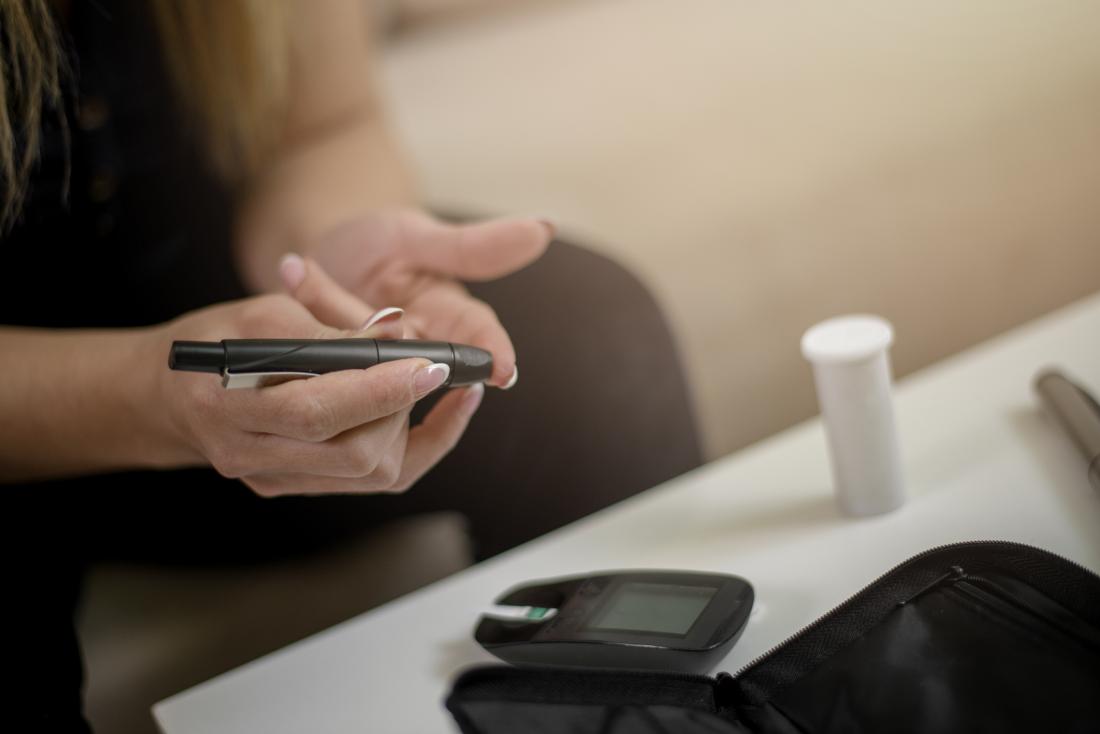
New research suggests that intensive blood pressure treatment may help those with type 2 diabetes.
Diabetes is one of the most common and costly chronic conditions in the United States. Over 100 million people in the U.S. have diabetes or prediabetes, according to the 2017 report compiled by the Centers for Disease Control and Prevention (CDC).
Diabetes is a disease that affects how the body processes glucose. Type 2 diabetes, which is the most common form of the disease, reduces the production of insulin, a hormone that regulates blood sugar levels. When this occurs, blood sugar levels rise, increasing the risk of heart disease.
Hypertension, or high blood pressure, also increases the risk of cardiovascular disease. According to the National Institutes of Health (NIH), blood pressure is “the force of blood pushing against the walls of [the] arteries as the heart pumps blood.” Hypertension happens when “this force against the artery walls is too high.”
Doctors measure blood pressure in millimeters of mercury (mmHg). The first number, or the systolic pressure, refers to the pressure in the blood vessels when the heart beats. The second number measures the diastolic blood pressure, which is the pressure in the blood vessels when the heart rests between beats.
Doctors define “prehypertension” as 120–139 mm Hg for systolic pressure and between 80–89 mmHg for diastolic pressure. They consider a pressure of 140/90 mmHg as high.
According to the CDC, about 75 million people in the U.S. have high blood pressure, but only about half of them have the condition under control.
Link between diabetes and hypertension
Many people with diabetes also have high blood pressure. Studies found that at least 1 in 3 people with diabetes also have hypertension.
Diabetes and high blood pressure make for a deadly combination because one condition makes the other worse. Diabetes may increase blood pressure by reducing the blood vessels’ ability to stretch, increasing the fluid in the body, and affecting how the body manages insulin.
According to the American Heart Association (AHA), nearly 70% of people age 65 or older with diabetes die from cardiovascular disease, and 16% die of stroke. In addition, people with diabetes are up to four times more likely to die from heart disease than those without diabetes.
Looking for the best blood-pressure targets
Now, a new study, which appears in the AHA’s journal Hypertension, found that people with type 2 diabetes who received intensive treatment to keep blood pressure levels at or below 130/80 mmHg experienced fewer heart attacks, strokes, and had a lower risk of death from any cause.
“Our findings demonstrate a benefit of more intensive therapy aiming for blood pressure thresholds at 130/80 [mmHg] or below and should help resolve some ongoing confusion over the best blood pressure targets for people with diabetes,” says the study’s senior investigator J. Bill McEvoy, a professor of preventive cardiology at the National University of Ireland in Galway.
The 2017 AHA blood pressure guidelines recommended intensive treatment for people with diabetes and hypertension to help reduce their blood pressure. The new study revealed that blood pressure levels of 130/80 mm/Hg may benefit people regardless of cardiovascular risk.
“Patients, including those with diabetes, with blood pressure levels above 130/80 on two consecutive checks should discuss with their physicians whether they need [a] change in treatment to get to a lower number.”
Prof. McEvoy
Benefits of intensive hypertension therapy
The researchers analyzed the outcomes of about 11,000 people with type 2 diabetes. The researchers clinically followed the study participants over 4 years across multiple clinical centers and locations.
The scientists examined people with type 2 diabetes and high blood pressure, who had different levels of cardiovascular risk, and who received intensive treatment. They then compared them with people with the same conditions who received a placebo.
Previous findings had suggested that hypertension treatment was effective, but researchers did not know whether this benefit also applied to people with diabetes and blood pressure below 140/90 mmHg.
The new study looked at rates of overall death from any cause and found that all people benefited from intensive treatment, regardless of cardiovascular risk.
More than 800 deaths and over 950 major vascular events — including heart attacks, strokes, diabetic kidney disease, and diabetic eye disease — occurred during the study period.
The people who received intensive blood pressure treatment experienced 9% fewer events and 14% fewer deaths than the people who took a placebo.
